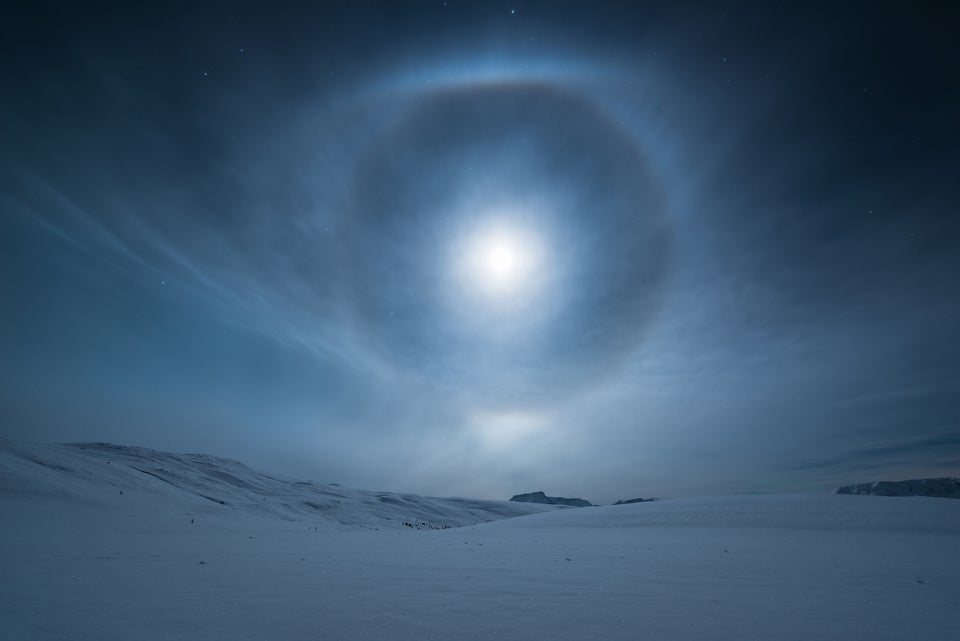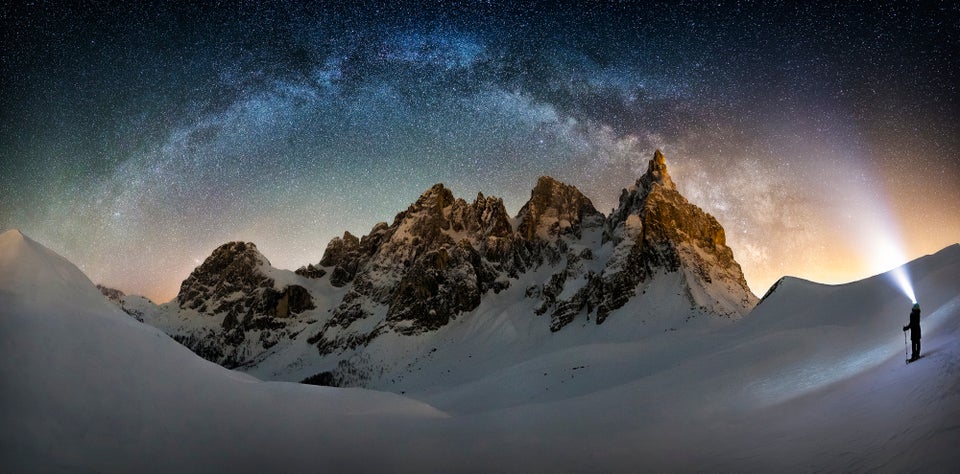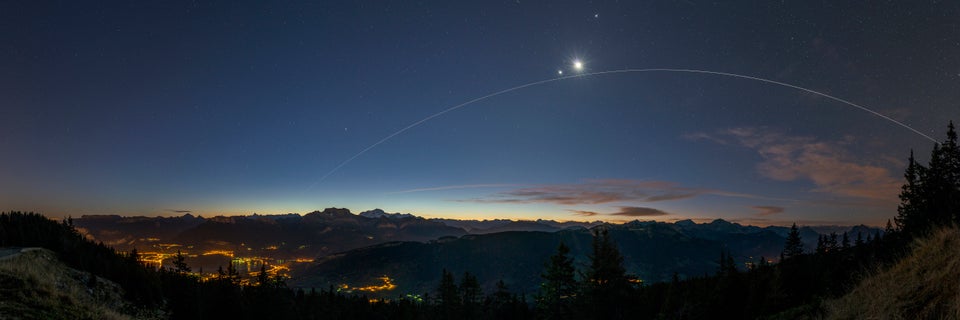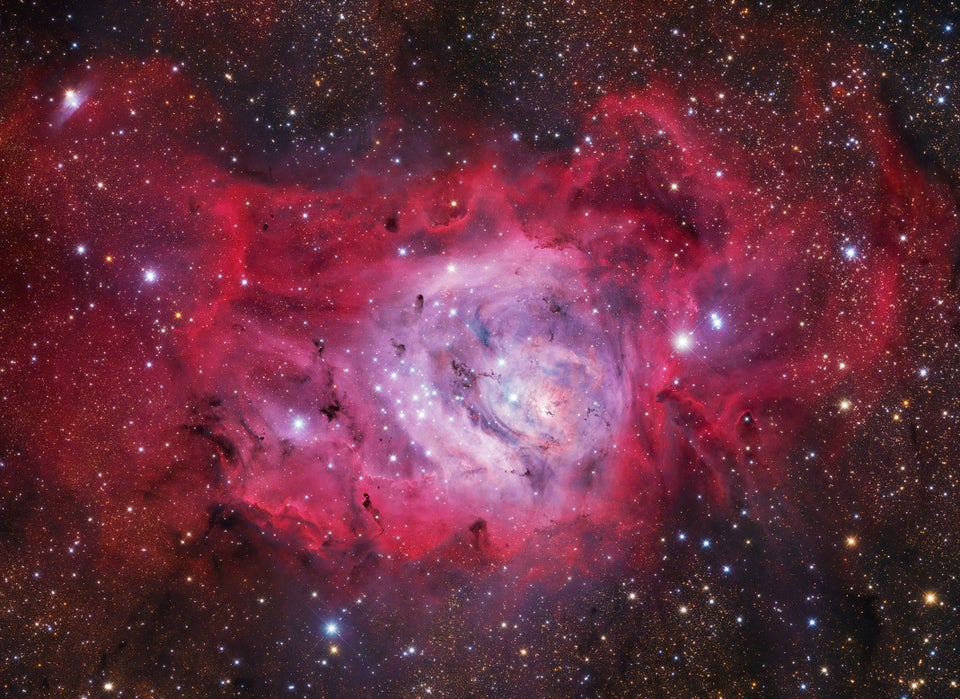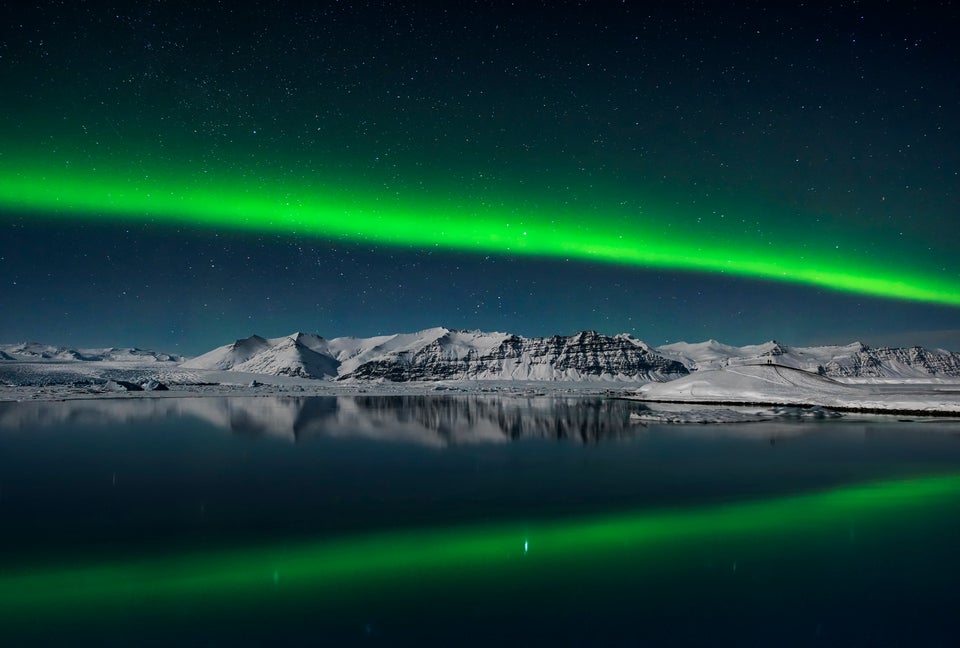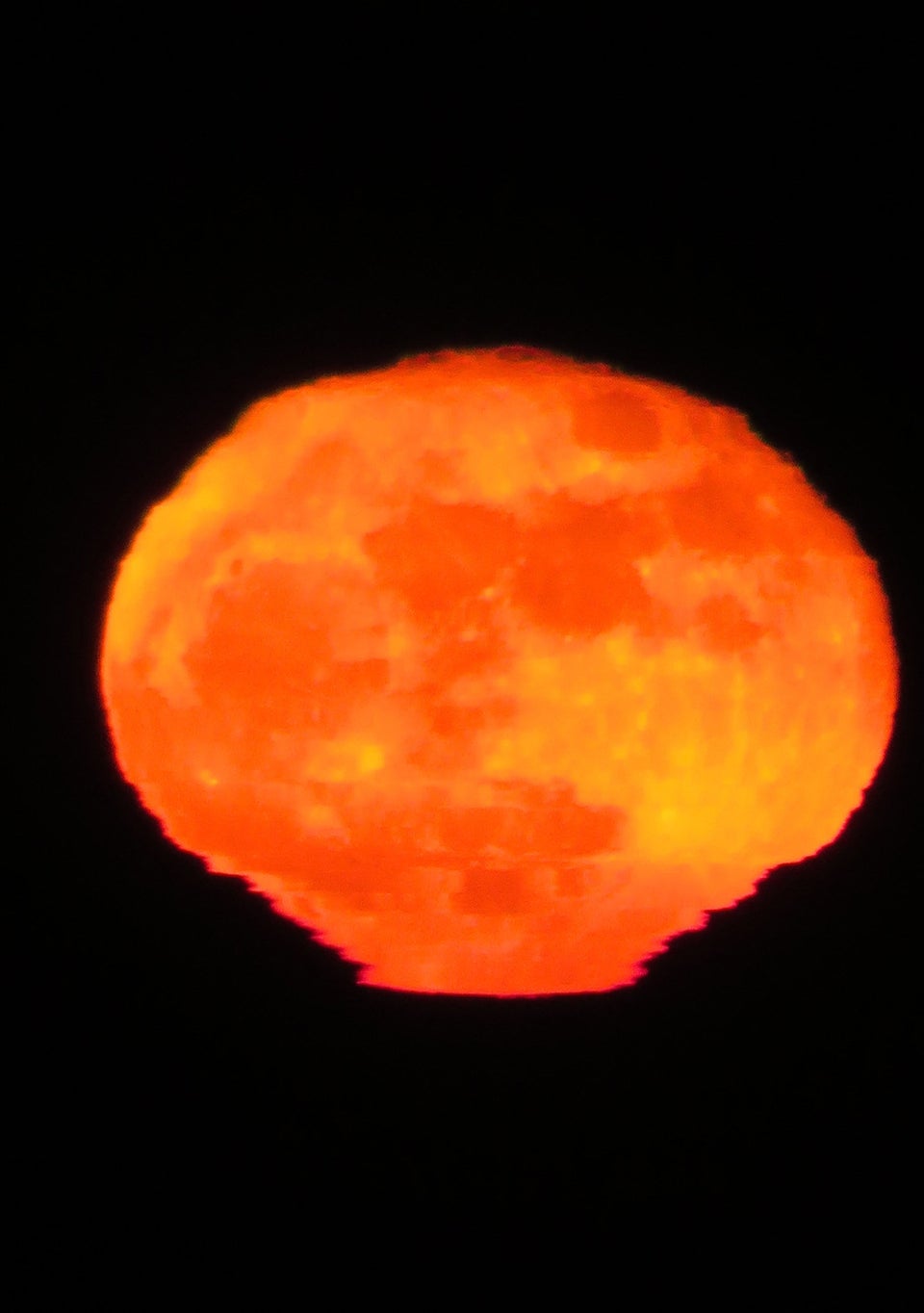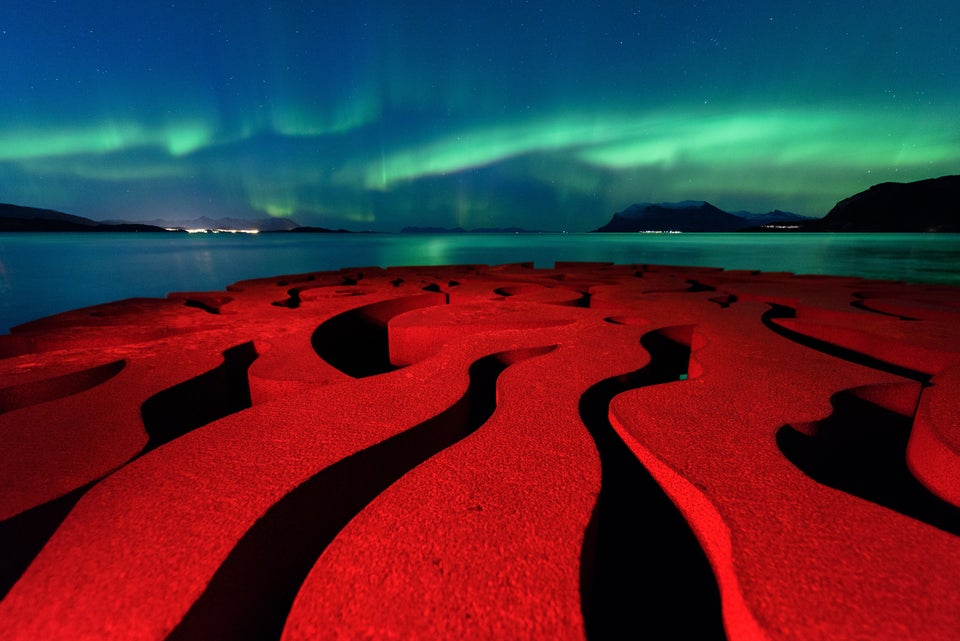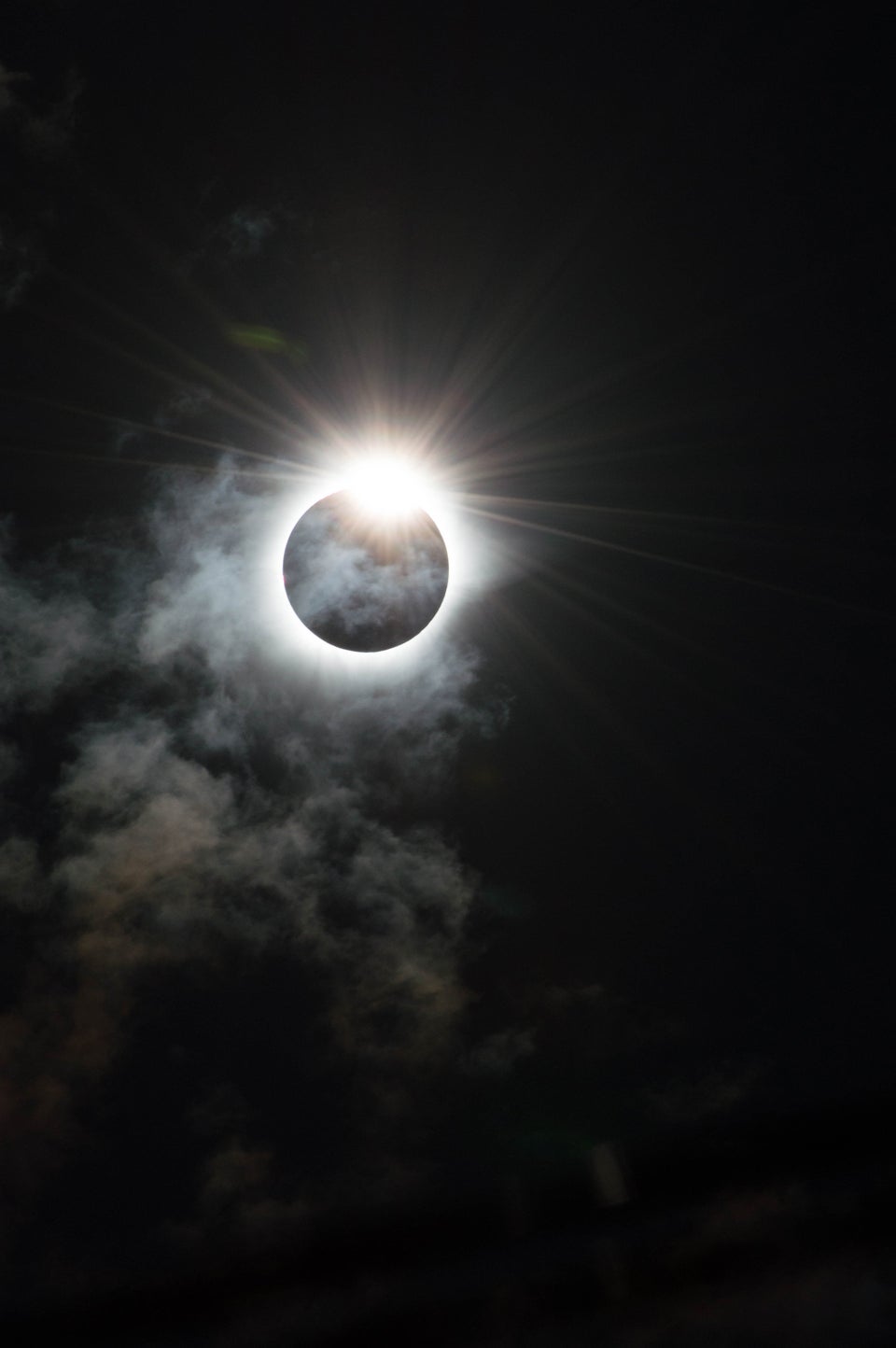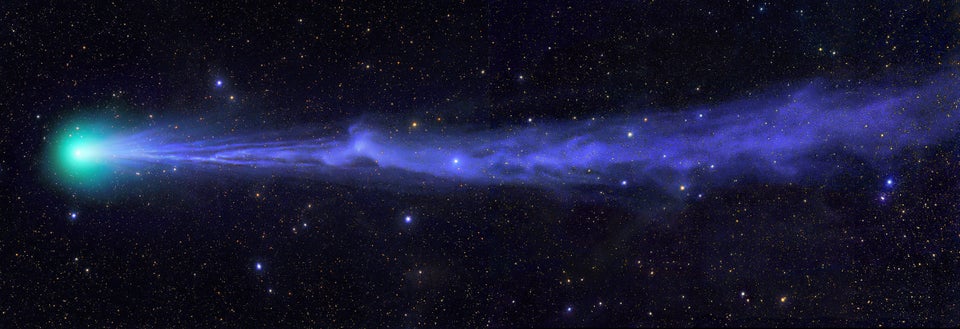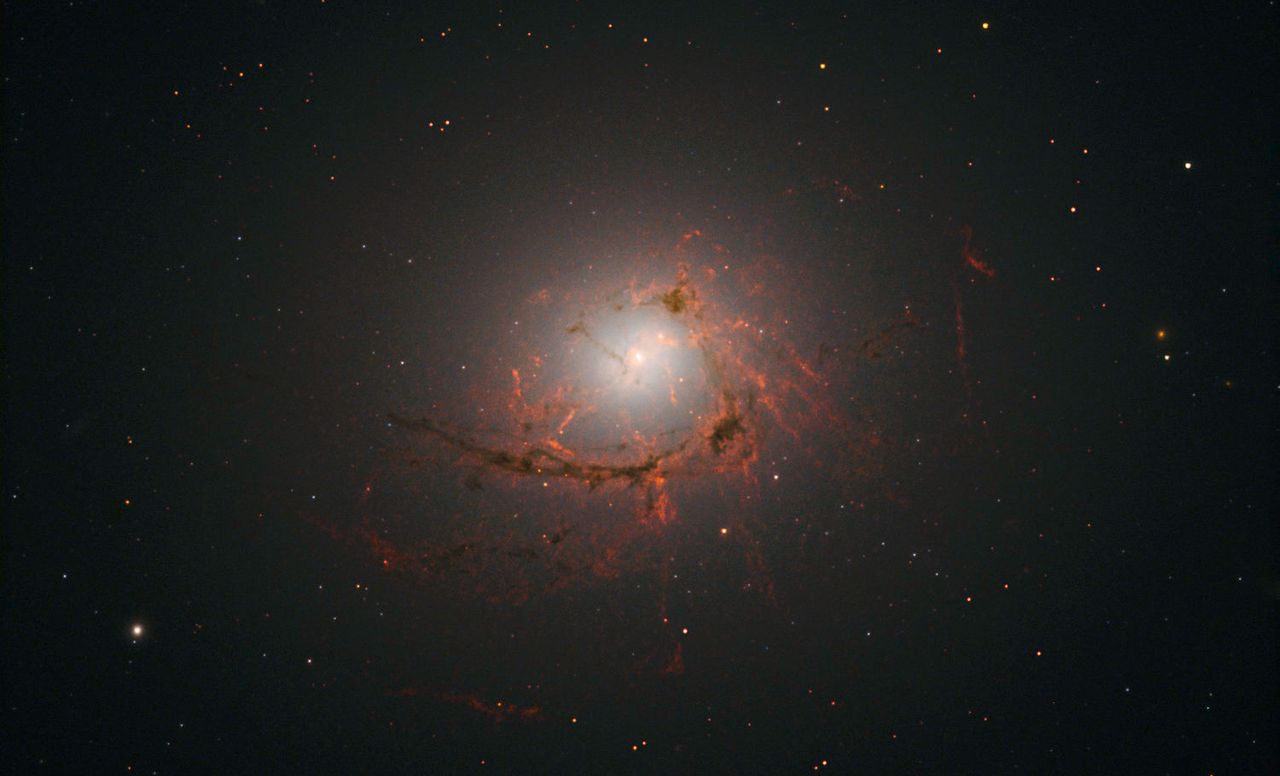Never has destruction looked so beautiful.
NASA and the European Space Agency’s Hubble Space Telescope has captured this incredible image of ill-fated galaxy NGC 4696.
Caught in stunning high-resolution, the image shows a galaxy that looks very different to the flat disc-shaped galaxies we’ve come to recognise.
Scientists from the University of Cambridge have been studying this utterly unique galaxy in the hopes of learning the origins for its rare and almost chaotic shape.
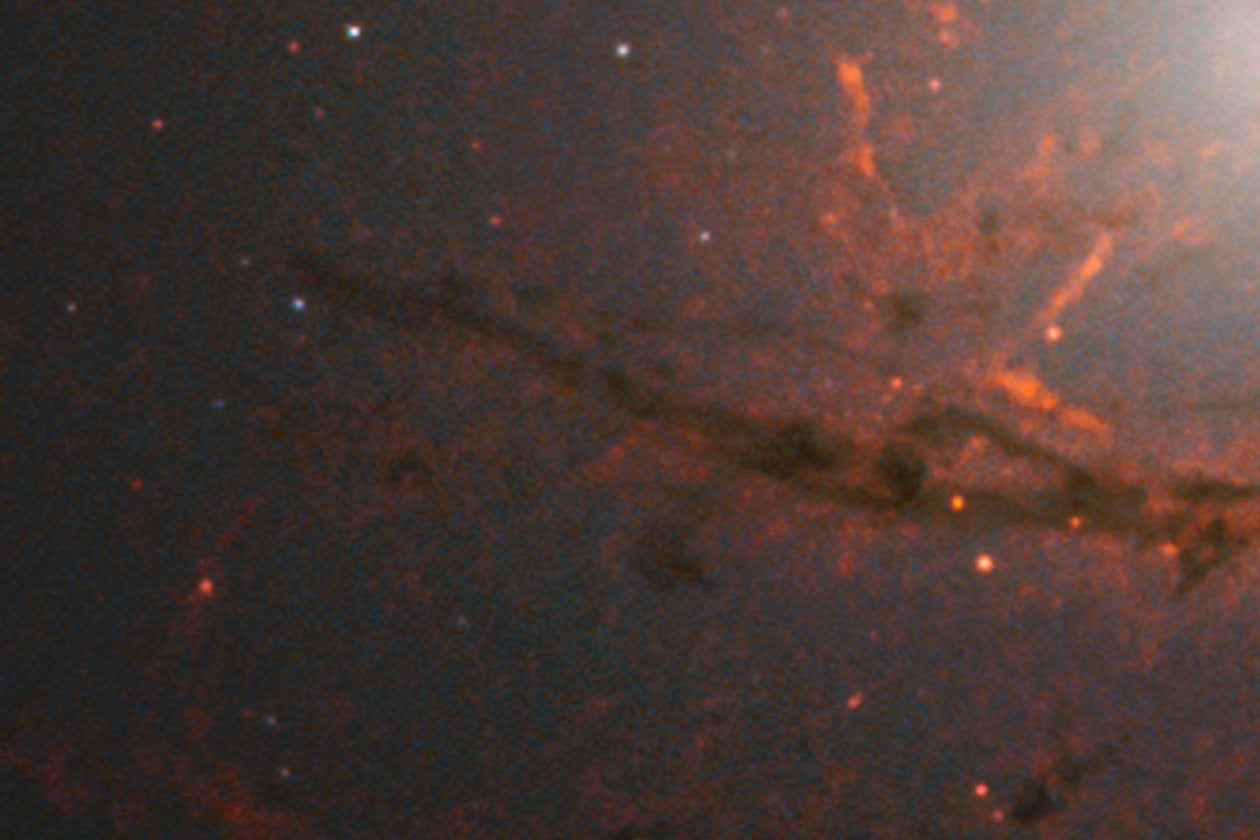
What they found was that it is essentially a swirling collection of vast curling filaments of matter, pushed out from the galactic core by something that is currently in the process of devouring it: A supermassive black hole.
Each filament is around 10 times more dense than the surrounding space, measures around 200 light years in width and contains vast quantities of dust and matter.
If you trace each one you’ll find that it leads back to the galaxy’s core where the supermassive black hole is flooding it with almost unimaginable amounts of heat and energy.
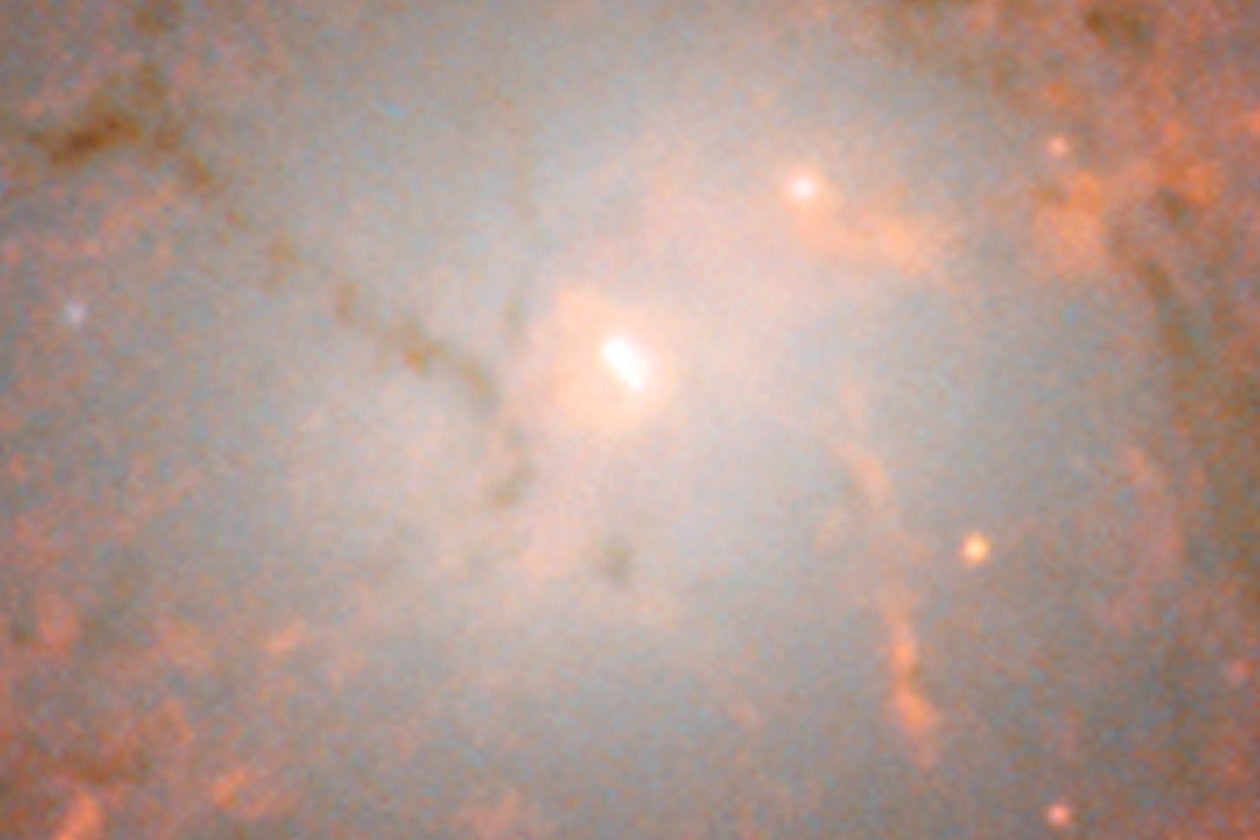
This heat and energy in pushes the material out into deep space.
Of course despite the pushing of material, the overwhelming force of the black hole’s ability to consume matter is overriding.
Each filament is gradually being consumed, a process that is as daunting as it is beautiful.
Astronomy Photographer Of The Year



